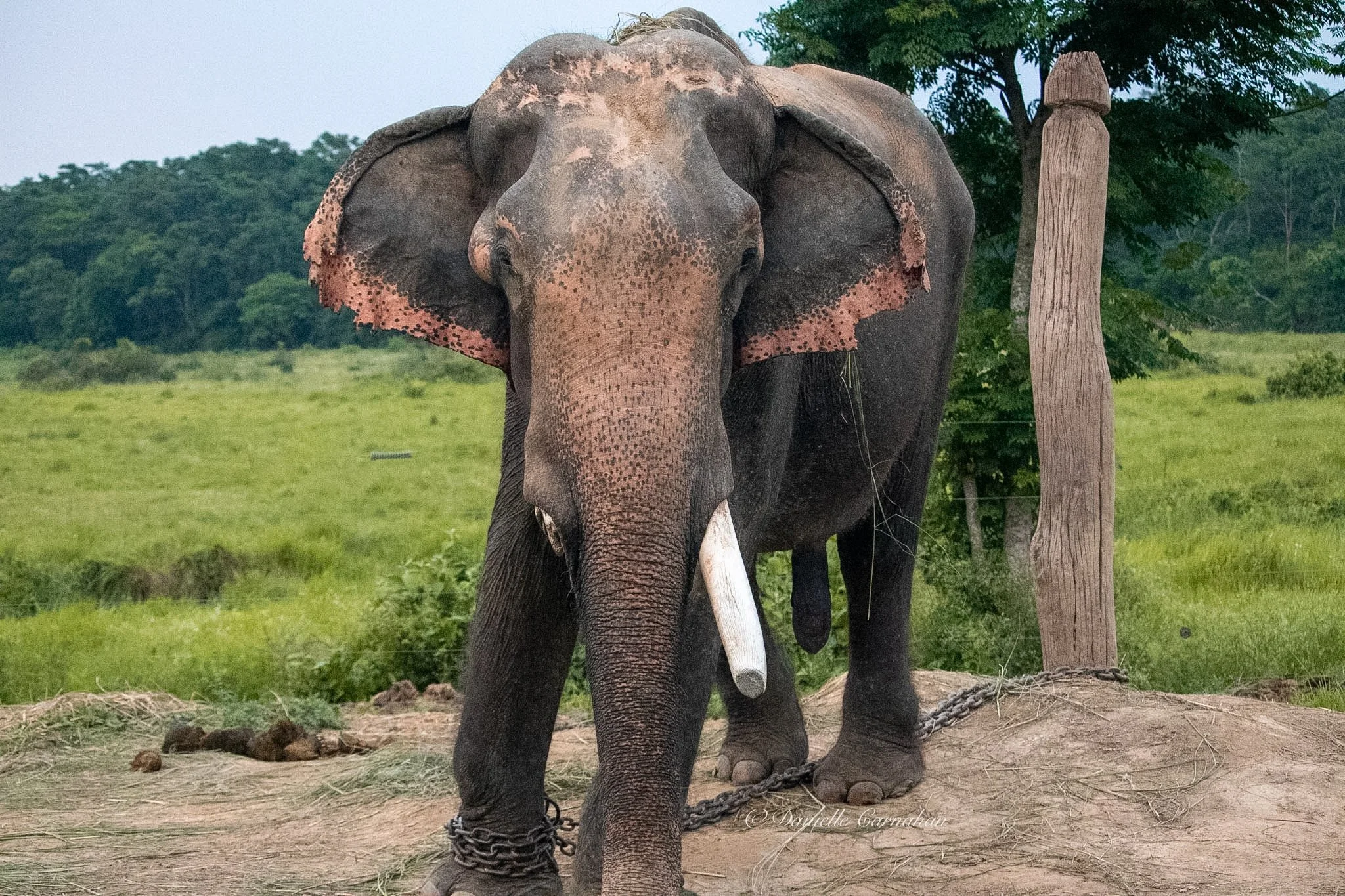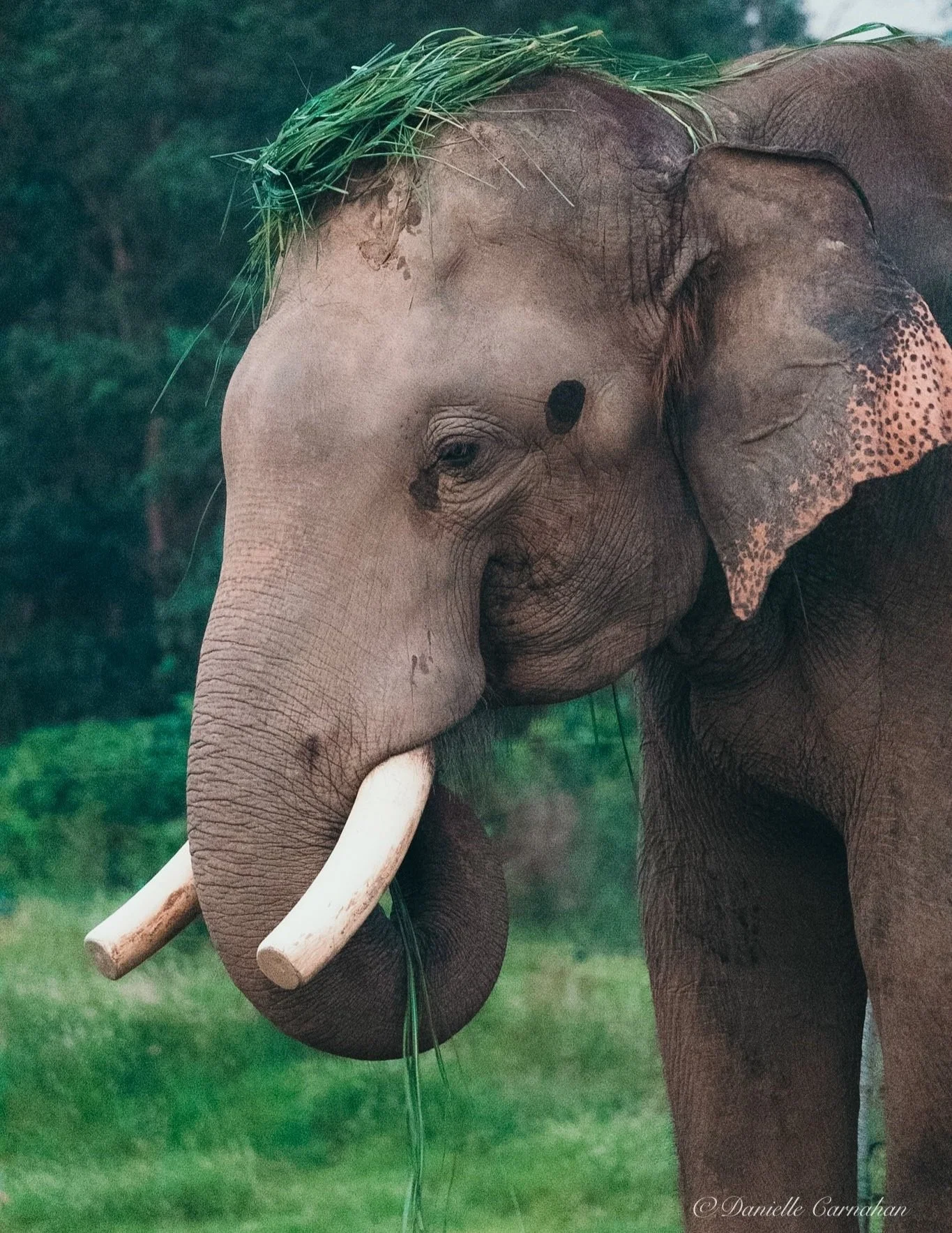Do Elephant Tusks Grow Back? [And Why Not?]
Elephant tusks do not grow back after they’ve been broken or cut. If an elephant has its tusks trimmed, blunted, or cut off, its tusks will remain that way for the rest of its life. Several species can indeed grow their external features back— like rhinos; however, ivory cannot regenerate over an animal’s lifetime. There is a simple reason for this, and that is…
Here’s an example of an elephant with one tusk broken, and one tusk blunted.
Elephant Tusks Are Incisor Teeth
Once elephants’ teeth get trimmed or removed, they do not grow back because they are adult teeth. Simply put, once humans lose an adult tooth, it won’t grow back. This is the same concept because elephants don’t have endless stores of teeth in their jaw. Every elephant goes through six sets of four molars throughout their life that they use to eat. They also have two incisor teeth on either side of their jaw that is replaced by their adult incisors when they’re between six months and one year old.
However, not all elephants grow tusks. The length and development of tusks in each individual is entirely based on their genetics, which is why it’s common to see elephants without any visible incisor teeth. This is especially common in Asian elephants as most individuals of this species never grow long tusks.
Unfortunately, this is why many African elephants and tusked Asian elephants get slaughtered for the illegal sale of their tusks. Since the tusk is an overgrown tooth, poachers cut into the elephant’s jaw to access the base of the giant tooth, thereby increasing the value of the ivory on the black market.
However, it’s important to note that you CAN trim elephants’ tusks without killing them, as is common in captive elephant facilities.
Trimming An Elephant’s Tusks
An example of what an elephant looks like with blunted tusks.
Since an elephant's giant incisor teeth can be incredibly dangerous when the animal is living in captivity, their tusks often get blunted by a veterinarian. This is the process of trimming the sharp tip of the tusk so that the edge is squared off. This makes the elephant slightly safer to be around as they cannot stab another animal with the pointed edge of the tusk.
The process of blunting or trimming a tusk is not painful because there are no blood vessels or nerves in the external portion of the tusk. Therefore, a decent amount of the tooth can be trimmed before causing any discomfort to the animal.
All this to say, killing an elephant for its tusks is simply out of the desire to get the entire tooth; because, in reality, the animal does not need to die to trim the tusk down.
The Pros And Cons Of Tusks Not Growing Back
If an elephant's tusks are trimmed or blunted, its overall behavior will change. Their tusks are one of their most effective weapons, and without a sharp point, they won't come out on top if they get into a fight with another elephant.
While this may not be a massive issue for captive elephants, it's certainly problematic in the wild. However, the question is: does this behavior change become worth it if this elephant is no longer a target for poachers?
Poachers are unlikely to go after an elephant with imperfect tusks that are either short or blunted. Therefore, this could be a small sacrifice for a wild elephant to potentially save it from a cruel death. Of course, many other factors go into this (like the legality and intention behind trimming the tusks), but it's still important to note.






